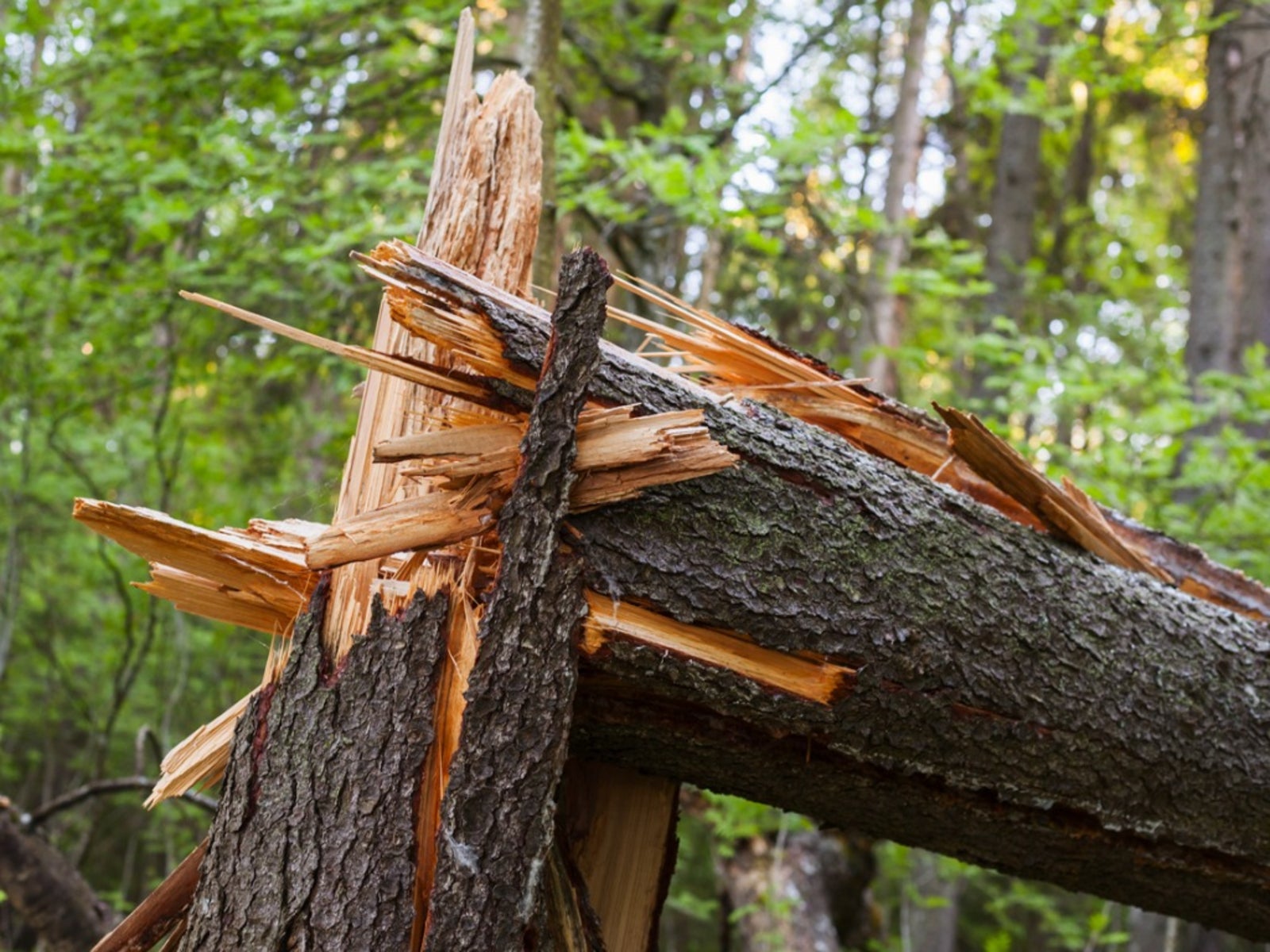Dry And Brittle Trees - What Causes Tree Branch Breaking And Brittleness


No landscape is complete without healthy trees to provide shade and structure, but when dry and brittle trees split and drop branches, you may wonder if they are worth the trouble. Let's learn more about what causes brittle tree branches.
Tree Branch Breaking
Brittle tree branches break when faced with strong winds, heavy snowfall, or ice, and they sometimes break under their own weight. The best way to keep tree branches from breaking is to keep them strong and healthy. This means watching them closely for disease symptoms, pruning them while they are young to encourage strong structure, and watering them often enough to prevent drought stress. Some problems with trees are beyond the homeowner's control. Environmental factors such as pollution, acid rain, and climate changes can result in dry, brittle trees. Some trees resist the effects of pollution better than others. Urban gardeners should consider growing pollution-resistant trees such as sugar maples, arborvitae, little leaf lindens, blue spruce, and junipers.
Why Tree Branches are Weak
Trees that grow quickly are often not as strong as those with slow, steady growth. Avoid fast-growing types such as tulip trees, silver maples, southern magnolias, locust trees, bottlebrush trees, willows, and Russian olives when growing trees in areas where they might experience stress. Over-fertilizing trees encourages rapid growth and weak wood. Trees grown in healthy soil don't need annual fertilization, and those grown in regularly fertilized lawns may never need additional fertilizer. Avoid fertilizing trees that are under stress from drought, insect infestations, or disease. A branch's crotch angle is the angle between the main trunk and the branch. Branches with narrow crotch angles are weaker than those with wide angles and more susceptible to breaking. It's best to remove branches with narrow crotches while the tree is young to prevent problems later. In general, a deciduous tree with a crotch angle of fewer than 35 degrees is too narrow. Drought stress also leads to weak, brittle branches, especially while the tree is young. Newly planted trees need a good soaking once a week, and for the first few weeks. Afterward, it's best to water the tree during dry spells. Trees develop deep roots, so they don't benefit from an occasional light watering. A good way to water a tree is to bury the end of the hose in the mulch and turn it on as low as possible. Let the water flow for several hours or until the water runs off instead of sinking into the soil.
Gardening tips, videos, info and more delivered right to your inbox!
Sign up for the Gardening Know How newsletter today and receive a free copy of our e-book "How to Grow Delicious Tomatoes".

Jackie Carroll has written over 500 articles for Gardening Know How on a wide range of topics.
-
 Try The Trend – Turn Any Bed Into A Keyhole Garden With This Clever In-Ground Composter
Try The Trend – Turn Any Bed Into A Keyhole Garden With This Clever In-Ground ComposterKeyhole gardening is an efficient and sustainable practice that saves space. Get started on this DIY project quickly and easily with an in-ground composter.
By Bonnie L. Grant
-
 4 Superfast Composting Methods: Turn Waste Into Garden Gold In 30 Days Or Less
4 Superfast Composting Methods: Turn Waste Into Garden Gold In 30 Days Or LessTry the fastest composting methods to turbocharge your pile and transform kitchen scraps and garden waste into finished compost in just a few weeks.
By Mary Ellen Ellis
-
 Best Trees For Carbon Sequestration And Climate Change
Best Trees For Carbon Sequestration And Climate ChangeLet’s keep planting trees. They are our best bet for capturing carbon and may help with our global warming issues.
By Teo Spengler
-
 7 Invasive Trees You Should Never Plant In Your Yard Or Garden
7 Invasive Trees You Should Never Plant In Your Yard Or GardenWhat are some invasive trees you should never plant in your yard? Click here to find out.
By Teo Spengler
-
 How Close Can You Plant A Tree To A Stump?
How Close Can You Plant A Tree To A Stump?Looking to plant new trees near old stumps or where stumps have been removed? Click here to learn how.
By Teo Spengler
-
 Messiest Trees That Drop Debris Everywhere
Messiest Trees That Drop Debris EverywhereWant to know which trees will create the biggest messes in your home landscape? Click here to find out.
By Amy Grant
-
 How To Get Rid Of Tree Sprouts In The Yard From Nearby Trees
How To Get Rid Of Tree Sprouts In The Yard From Nearby TreesLearn the simple way to keep pesky tree seedlings in your lawn from becoming saplings.
By Teo Spengler
-
 How To Tell How Old A Tree Is
How To Tell How Old A Tree IsEver wondered how to calculate the age of a tree? Click here to learn all about it.
By Teo Spengler
-
 When To Remove Tree Stakes From Saplings
When To Remove Tree Stakes From SaplingsA newly planted tree may grow strong when it’s staked, but don’t forget to remove the stakes when it’s stable.
By Teo Spengler
-
 Inosculation And Trees Growing Together
Inosculation And Trees Growing TogetherIf you ever see two trees that have bonded and grown together, read here to learn why and how it happens.
By Teo Spengler